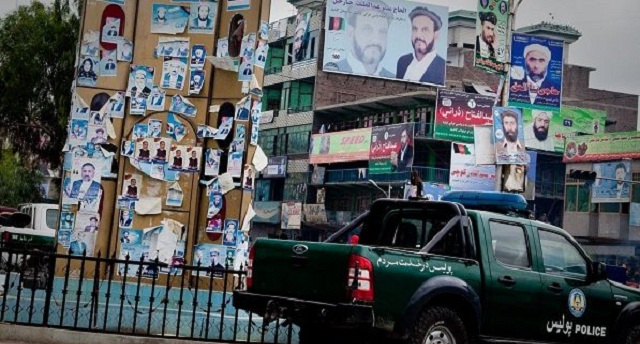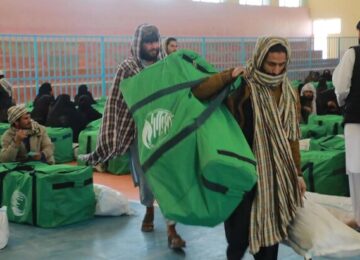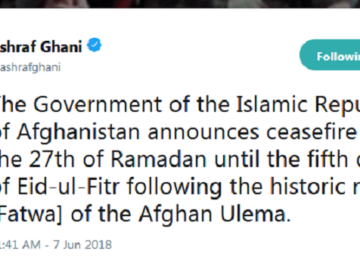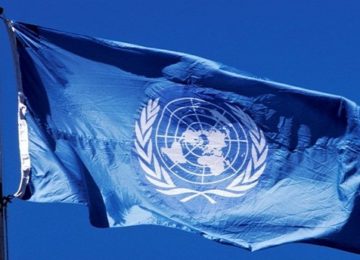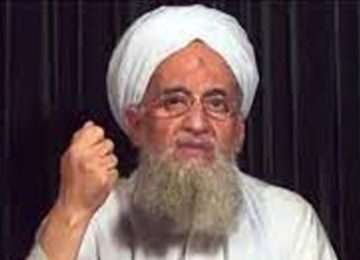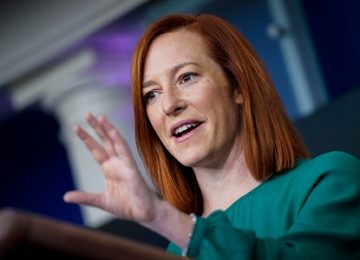There is a vibrant electoral atmosphere in Herat city and nearby district centres. Rival political forces have brought supporters onto the streets to show their power and candidates have opened campaign headquarters and engaged in a range of heated campaign activities. In the midst of the bustle, there are also concerns over a series of small-scale bombings and the arrival of tens of thousands of internally displaced families – whose presence may have repercussions for the elections. Moreover, the farther you go from the city and nearby district centres, the more insecurity grows and the election campaign diminishes. AAN researcher Said Reza Kazemi writes from Herat city that deteriorating security poses serious questions about how many voters will be able to get to the polls on 20 October and therefore how representative the election can be.
Electoral atmosphere in and around Herat city: from reluctance to liveliness
When voter registration began in Herat city on 14 April 2018 (see here), there was a reluctance to participate. The previous fraudulent presidential and provincial council polls had fostered a disillusionment with the Afghan government and with elections. For one working day, the government closed its offices and public places such as institutes of higher education to at least get public servants, university teachers and students to register for the vote. Fears about security and Taleban threats fed into the disinclination to get involved. Thousands of people decided they did not want election stickers pasted on the back of their tazkeras (national ID cards). In some areas in some districts of Herat, where the Taleban hold sway, there was no registration at all. The Independent Election Commission (IEC) was not able to access one district, Farsi, when it carried out a security assessment of registration and polling centres in late 2017 (see AAN reporting on this here).
The consequence of all this was that, out of an estimated one million voters in Herat province, only around half registered (see also a previous AAN dispatch on new voter registry here), with, it is alleged, some communities hit harder than others. A Hazara elder who has lived around Herat city for more than a decade and a half and recently met two Hazara candidates (Habibullah Ghoryani, a newcomer, and Muhammad Reza Khushak Watandost, a sitting MP) for campaign purposes put it bluntly: “Thousands of our people did not register because they were afraid that… if they needed to travel overland between Herat, Kabul and elsewhere,” the Taleban, “would cut off their heads if they caught them with sticker-pasted tazkeras.” His estimate was that the Hazara vote should be 60,000-strong in Herat, but this year registered voters had “fallen to 26,000.” Some influential Shia Hazara and Sayyed residents of Herat told AAN they believed the threats could have been a conspiracy to scare their people away from the elections in order to disenfranchise them.
Even now, so soon before the vote on 20 October, there are contradictory voter registration figures. The Independent Election Commission (IEC) in Kabul has reported 539,141 registered voters (297,391 men, 239,818 women and 1,932 kuchis or nomads) (see page 9 here). According to Ahmad Shah Qanuni, head of the IEC office in Herat, the figure is less: 500,057 (about 55 per cent men and 45 per cent women). Meanwhile, an IEC official in Herat, who asked not to be named, told AAN that 557,720 people (308,613 men, 247,434 women and 1,673 kuchis) have registered to vote in the coming parliamentary elections in the province.
Nevertheless, despite all this, as time has gone by, Heratis have become increasingly interested in the elections. The city is bustling with election activity, some of it confrontational as rival groups face off ahead of the poll. (1) Protests have been deployed in a game to show off apparent power. One of the two main players in this game are those affiliated to the Grand National Coalition, an alliance of political parties that emerged from the so-called ‘Ankara coalition’ of several senior politicians, including First Vice President and leader of Jombesh-e Milli Abdul Rashid Dostum, Second Chief Executive and leader of Hezb-e Wahdat Mardom Muhammad Mohaqeq and (now former) Balkh Governor and Chief Executive of Jamiat-e Islami Atta Muhammad Nur (see AAN analysis here, here and here). Locally, the coalition is mainly represented by former Herat governor and regional strongman Ismael Khan who among others has his son Sayyed Taha Sadeq running for parliament. The other main party in the protest game are supporters of the central government, led by Sayyed Abdul Wahid Qatali, former head of the provincial council, subsequently Herat mayor and currently President Ashraf Ghani’s chief of staff.
On 15 September 2018, dozens of Grand National Coalition supporters staged a sit-in in front of the IEC office and closed it down for public access. They were protesting alleged lack of transparency in election preparations and what they claimed was the deliberate engineering of it by President Ghani and the team in and around the presidential palace. The following morning, Herat provincial police chief General Aminullah Amarkhel ordered police forces to reopen the premises by force. The police dispersed the protestors by firing shots in the air, and rolled up their protest tent, injuring and arresting some people in the process (see here). On 26 September, the government brought a large crowd of its supporters to the city centre, those who, according to a statement issued by the Administrative Office of the President (and seen by the author), backed “the national election process, national development projects and the peace process.” There have been reports that both sides paid daily-wage labourers, who are not few in number in the city, to participate in the demonstrations to increase protestor numbers as a show of strength directed at the other side.
The election atmosphere has become even more vibrant – and in a more positive way – since campaigning began on 28 September 2018. The face of the city and nearby district centres such as Injil, Guzara and Zendajan changed overnight. In these places, many of the 161 candidates, among them sitting MPs, (2) 28 women and several young people (see the list here), are fiercely engaged in the campaign, both in real terms and online, particularly through Facebook. In their bid to try to gain one of Herat’s 17 seats (five reserved for women) in the parliament, they have recruited and paid campaign staff, opened their campaign headquarters where they receive and feed large numbers of local people, met people from different walks of life and put up a great number of billboards, posters and banners in and around the city, courting and wooing people for their votes. So many restaurants, hotels, printing houses, marketing companies and scaffolding businesses are all extremely busy nowadays in and around the city. In Herat city, local environmentalists have voiced their concern about the sheer number of candidate posters and banners, the hammering of nails into trees and urban cleanliness in general. In response, Herat Municipality has been removing posters and banners from trees and traffic signboards.
The city: pressure building up
In the run-up to the election campaign period, from August 2018 onwards, Herat city witnessed a series of small-scale improvised electronic device (IED) attacks. On 9 August, explosives planted in a motorbike went off opposite a vehicle carrying a former Afghan Local Police (ALP) commander, Haji Amir Shindandi, in the Old Corps Road in Police District (PD) 1, killing at least four people and injuring 12 others including the ex-commander. On 5 September, there were two consecutive explosions in Chawk-e Gulha area in downtown Herat, injuring at least six people, including two traffic police officers. In late August, earlier in the same place (ie Chawk-e Gulha), an explosion killed at least two people. On 4 October, a blast targeted a parked police vehicle in Darb-e Khush area in the city centre, injuring about ten people, among them a child. In the same place, Herat police later on seized IED equipment in a hotel. On 12 October, there was an IED attack on an audio-video centre in Gawaliyan area in the south of Herat city which damaged the centre but left no casualties; the centre has been involved in the management of some high-profile events.
What could be called ‘social pressure’ has also been building up in Herat city. Quoting several sources, including the Provincial Directorate of Refugees and Repatriation, the Afghan daily newspaper Hasht-e Sobh said there are about “one million internally displaced persons from Farah, Ghor, Badghis and some southern provinces” currently living in and around Herat city. (3) This seems to be a cumulative number reached over several years. Most recently, the UN Office for the Coordination of Humanitarian Affairs (OCHA) and its partners have reported that in the western region as a whole, over 250,000 people have been displaced of which about 60,000 are in Herat city and twice that number in Qala-ye Naw in Badghis province (see here and here). People from the insecure and drought-affected districts of Herat province – Shindand, Adraskan, Kushk-e Kuhna, Kushk-e Rubat Sangi and Gulran – have either also been displaced to the city or have fled to Kandahar province (see also here). In Herat, most IDPs have settled in tents set up on plots of land, due to be built on, but as yet clear, in the areas of Sheydai, Dasht-e Hawz and Maslakh, respectively in the east, north and south. These neighbourhoods are regarded as the ‘gates’ to Herat city from these three directions. AAN heard from several IDPs in Sheydai about the severity of the drought and the insecurity in their areas of Badghis province that has forced them to leave their houses, orchards and lands for the sake of protecting their families.
A growing number of local government officials and residents have drawn a direct connection between the displacement and the rise in security-related incidents. They have attributed responsibility to IDPs for the recent security and crime incidents. The Killid Group, a media organisation that is also active in Herat, said in a research paper that local security and justice authorities had said the IDPs were implicated in “30 per cent of security incidents in Herat” (see here). These officials claimed that the Taleban and other insurgent and criminal groups had established links with some of the IDPs with a view to destabilising the city and the wider province. Many local Heratis and government officials, alarmed by the scale of the displacement – not seen since the drought of 2000/2001 – have increasingly called for the return of the IDPs to their original provinces (see for example here).
The IDPs – whether or not some are actually involved in crime and/or the insurgency – have become an election issue and a matter of debate in Herat. Some Heratis are also alleging they will be used to carry out fraud in the election. There have been reports that some of the IDPs have got tazkeras during recent tazkera distribution in Herat and then registered to vote in the upcoming elections by getting stickers fixed to the back of their tazkeras. It is, of course, their legal right to be registered to vote in their place of sanctuary. Still, some local Heratis worry that the sheer number of outsiders, not all from the province, could affect who will represent Herat in the next parliament.
Unfortunately, given this charged atmosphere, security-wise and politically, the suffering of a large number of people who have been displaced because of the war or the drought or both is glossed over.
Because of fears about security in Herat city, the districts and neighbouring provinces, there is a greater, visible presence of security forces at the gates to and in key intersections in the city. Government security forces have also conducted two military manoeuvres or parades, one on the streets inside the city and the other on the way from Herat city to Shindand district in a display of power and attempt to boost confidence in the security arrangements for the coming elections (see here).
The districts and neighbouring provinces: mounting insecurity
The government is right to be concerned about security. It has been deteriorating during the last couple of years in several districts of Herat province where the government and Taleban have been engaging in a violent contest for control. Roads between several districts, particularly the faraway ones, and the provincial centre are increasingly unsafe. There are frequent Taleban checkpoints on the way that control the movement of people and goods. Some of the posts are temporary, but others are more permanent. Those working for the government and foreign organisations are particularly afraid of travelling overland as they are targets for attacks. They thus go to great lengths to hide their institutional affiliation while on the road.
The Taleban provincial base, the southernmost district of Shindand, recently divided by the government into five smaller districts to improve its managementand therefore, it was hoped, its security, is the most insecure in the province. There are continual clashes between the Taleban and government forces (see for instance here and this previous AAN analysis). The two opposing Taleban factions – one loyal to the mainstream Taleban led by Mullah Haibatullah and the other to Mullah Rasul, who set up his own group after the death of Mullah Omar was announced in 2015 – also recently resumed fighting each other in Shindand (read previous AAN analysis on Taleban after Mullah Omar here). There are also reports about recent Taleban infighting in Guzara district that left at least 17 of their members dead and eight others injured. However, according to local Kohandazh news agency, the Taleban version of events is that they clashed with the Afghan Local Police (ALP) killed 16 local policemen and captured their post.
In other districts, the Taleban have attacked government checkpoints, closed roads at least temporarily and provoked the government to launch operations in response, leaving casualties on both sides. Such incidents have occurred recently in the southern district of Adraskan, the eastern districts of Pashtun Zarghun and Obe, (4) the northern districts of Kushk-e Rubat Sangi and Kushk-e Kuhna, the eastern district of Ghoryan and the north-eastern district of Kohsan. Although there have been, so far, no large-scale attacks by the Taleban to take control of district centres in Herat, some are vulnerable.
Herat province has also seen specific election-related violence. In late May 2018, the Taleban killed one IEC voter registration centre staff member and a soldier in Chesht-e Sharif district. In another similar event in the same month, the Taleban shot dead an ALP soldier who was guarding a voter registration centre in Guzara district. In early September, a rocket was fired at a campaign office in Islam Qala Township in Kohsan district. It damaged the office compound, but caused no casualties. On 13 October, unknown armed men attacked the campaign headquarters of a candidate – Sayyed Azim Kabarzani – in nearby Injil district, killing one of the guards; a child was also killed and two other children were injured in the incident.
A similar security trend is seen in Herat’s immediate provincial neighbourhood (see also here). In neighbouring Badghis to the north, the Taleban have encircled Qala-ye Naw, the provincial centre. It seems unlikely it will fall, at least in the foreseeable future, because of a concentration of government forces stationed there as well as the dispatch of commando forces. The fall of Qala-ye Naw would be disastrous for the Afghan government in the entire western region. Recently, there have been severe clashes between the Taleban and government forces in Muqur, Qades and Abkamari districts of Badghis province. In most cases, the government has launched operations in response to Taleban attacks on its checkpoints. The neighbouring province of Ghor to the east is also unsafe, but to a much lesser extent. In a recent security incident, an attempt by government security forces to arrest an uprising commander, Alipur, who is from Behsud district in Maidan Wardak province but was visiting a parliamentary candidate in Lal wa Sar Jangal district, resulted in a firefight which left around 10 people, including one woman and four policemen, dead. To the south, Farah province remains troubled with the Taleban still near its gates since they attacked the provincial centre in May 2018 (read AAN’s recent dispatch here). Backed by NATO-led troops, government security forces have increased airstrikes on insurgent positions to keep the road access between the provincial centres of Farah and Herat open. It seems in Herat, at least, the current strategy on the part of the NATO-backed Afghan security forces is to keep attacking insurgent positions so as to make them busy defending areas under their control instead of giving them time and space to interfere in and disrupt the electoral process.
This complicated security environment has prompted senior government officials to be more outspoken to at least attract attention to what they see as happening on the ground. They consider the Taleban to be intent on extending their military influence to areas of Herat where government security forces are not concentrated and then expanding to encircle and vie for control of district centres. Muhammad Asef Rahimi, Herat provincial governor, and General Nurullah Qaderi, the top military official for the western region, have given the narrative of the government repeatedly: backed by Iran and Pakistan, the Taleban are aiming to devastate the country’s infrastructure projects, implying for example that the Salma hydropower dam in Chesht-e Sharif district in Herat province is at risk. Putting the blame on neighbouring countries obviously ignores the government’s own failings in many different areas from security to development and to governance in general.
Conclusion: elections amid growing insecurity
The vibrancy of election campaigning in Herat city and nearby district centres coupled with the rising insecurity in the rest of the province raises serious questions about the nature of the coming elections. Hundreds of thousands of Heratis did not register to vote or will not be able to vote in their areas in several districts. This is both in the provincial centre (in the case of Shia Hazara and Sayyed residents) and particularly in districts contested or controlled by the Taleban. In some areas of some districts, especially the far-flung ones under Taleban control and in one whole district, Farsi, no voter registration took place and there will be no election at all. According to the IEC official quoted above, of all 462 polling centres in Herat province (see their list here), 162 will be closed on polling day. Most of the province will be affected to some degree. In two newly created districts in Shindand, ie Zerkoh and Pushtkoh, no polling centres will be opened. Only in Herat city and the immediate district of Injil will all designated polling centres be opened.
Campaign activity has thus focused on Herat city and district centres, while voters residing in villages situated far from them are potentially disenfranchised. Some residents told AAN that powerful candidates and their local community supporters might be able to influence at least some local Taleban forces to let elections take place in particular areas, or if that did not work, would bring their supporters to safer areas where they could vote. At the same time, there are fears that insecurity in areas far away from the district centres might provide an environment conducive for widespread fraud because few candidate agents and observers can go there to monitor the vote. This has been a pattern in previous elections.
The provincial electoral landscape is thus marked by a strange co-existence of hope and fear, of participation and its lack. The parliamentary elections of 2018 in Herat are not taking place in a normal or conducive environment and there are concerns as to how inclusive they will be and whether the widespread insecurity will aid fraud. Yet, it seems the Afghan government and its international backers have decided that an election, whatever it is and however it is held, is better than no election at all.
By Special Arrangement with AAN. Original link.
Disclaimer: Views expressed on this blog are not necessarily endorsed or supported by the Center for Research and Security Studies, Islamabad.



